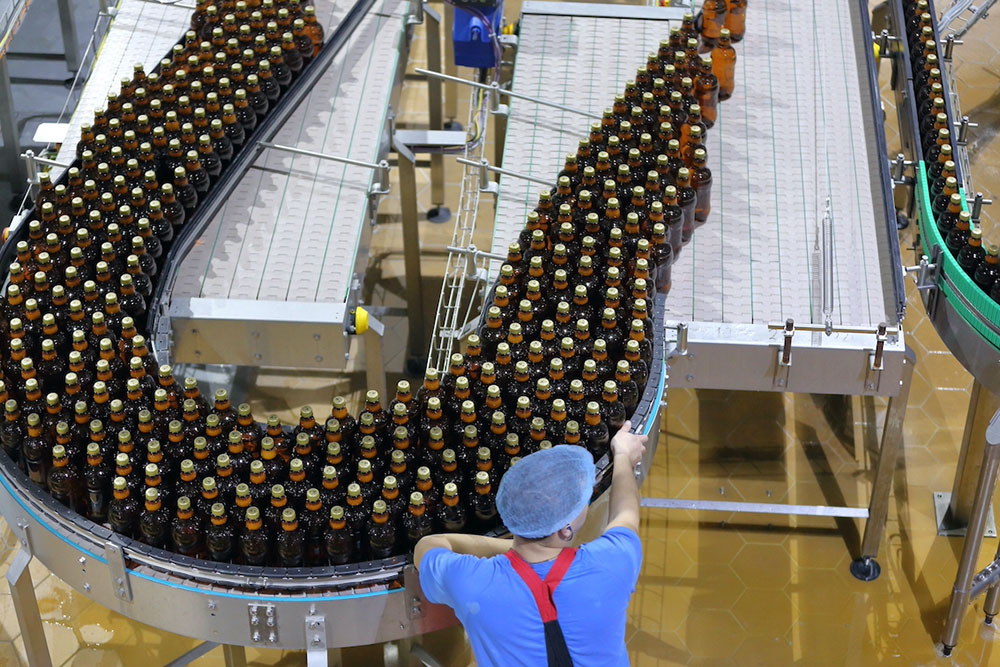COVID-19 has been a catalyst for digital transformation. But manufacturers will need to take iterative steps forward for successful change.

For organizations who saw demand spike due to COVID-19, it was imperative to identify ways to maximize throughput and productivity.
By Jason Chester – Director of Global Channel Programs, InfinityQS
Digital transformation is a dominant trend in big business thinking. It’s talked about in ivy league business schools, top tier consulting firms, and the technology industry at large, as the panacea for the future of industry. Similar terms like Industry 4.0, Smart Factories, Factory of the Future are all shades of digital transformation. But what does it actually mean?
Simply, it is the emergence of new technologies converging with a maturing of existing ones which are fused to our physical world to completely transform traditional industrial and manufacturing processes to highly efficient, automated ways of making things fit for the 21st century. It’s even been likened to other industrial epochs like the invention of the steam engine, the assembly line principle, and of course electricity.
The importance of digital transformation in the manufacturing industry is undisputed. Over the last few years most business leaders have begun formulating and implementing digital transformation strategies. Each strategy may be different for every organization but the general approach will see them taking many years to achieve and requires overhauling every corner of the manufacturing and value chain process, which can be expensive and risky. The COVID-19 pandemic, however, changed all of this with manufacturers putting their strategic agendas on hold while they battle with unprecedented operational challenges as well as volatile and unpredictable markets.
One thing that the pandemic did was expose significant and often widespread operational weaknesses within manufacturing. It brought into sharp relief where infrastructure, legacy systems, and incumbent processes exacerbated the problems that manufacturers faced. Overnight, manufacturers were faced with a plethora of problems that they did not anticipate, including:
However, some were on the opposite side of the spectrum and saw an increase in demand for products. For those organizations that saw a high demand, it was imperative to identify ways in which to maximize throughput and productivity.
What became quickly apparent, were that different types of technology could be used to help address these challenges. For example, cloud-based SaaS solutions can help manufacturers tackle the challenge of working away from the plant floor by enabling staff to work efficiently in an isolated space just like normal. This could be quickly achieved through rapid procurement, deployment, and training—typical with cloud-based solutions.
Each challenge comes with its own set of difficulties and overcoming them means manufacturers would need to pay particular attention to the functions, areas, and processes where such technology solutions could have the greatest impact. By deploying technology solutions quickly to the areas with most need, urgency, or benefit has led manufacturers to mitigate many of the avoidable impacts the pandemic is having on their businesses.
But this is an iterative process. Focusing on a single process, area, or plant with the greatest opportunity, then extending out to include other processes, areas or plants. The outcome is a more gradual, tactical approach to digital transformation. As digital solutions are gradually deployed further across the enterprise, manufacturers are also moving closer towards their grand digital transformation vision.
This iterative and phased approach to digital transformation has a range of other benefits, including:
The pandemic has been challenging for everyone. Those working in manufacturing, retail, hospitality, and or travel, to name a few, have experienced a difficult time where uncertainty and anxiety remains at the front of everyone’s mind. But the pandemic has also led to opportunity, accelerated through digital transformation initiatives. What was once a long-term strategy that organizations planned to implement over the course of several years quickly became deployed in months, or even weeks. The result, or end point, may very well look the same, but how we got there was not as we expected.

Jason Chester
Jason Chester is responsible for the implementation, management and overall success of the InfinityQS Global Channel Partner Program. With more than 25 years of experience working directly within the Enterprise IT industry, he has gained a deep understanding of how information technology capabilities can deliver significant and sustainable business value to end-user organizations. Currently, Chester’s main area of interest is the business impact of next-generation information technologies on industrial and manufacturing sectors.
In this episode, I sat down with Beejan Giga, Director | Partner and Caleb Emerson, Senior Results Manager at Carpedia International. We discussed the insights behind their recent Industry Today article, “Thinking Three Moves Ahead” and together we explored how manufacturers can plan more strategically, align with their suppliers, and build the operational discipline needed to support intentional, sustainable growth. It was a conversation packed with practical perspectives on navigating a fast-changing industry landscape.